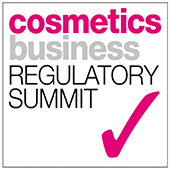This is a series of articles based on information from the 3rd edition of the 2016 Cosmetics Business Regulatory Summit. The event focused on regulatory challenges for cosmetics manufacturers including the embattled substances issue.
While packaging is primarily a marketing exercise, it’s also a delivery mechanism and a barrier function that is important in terms of avoiding microbial contamination. Ray Boughton of Delphic HSE concentrated on the safety assessment of cosmetic packaging in his presentation, asking: “If the product is no longer in continuous contact with the external environment, what is it instead in contact with?” With the answer being the internal parts of the packaging, the concern becomes, is there anything that it can be exposed to in the packaging? As Boughton stated: “Is there anything in the packaging that in some way changes the formulation and what the consumer is exposed to? We can’t have materials moving from our product into the packaging and from the packaging into our product. Or can we have reactions between the products and the packaging that can lead to the generation of new chemicals in situ?”
The regulation impacting cosmetics packaging in Europe is Cosmetics Regulation 1223/2009 Annex I, which requires the manufacturer to provide the characteristics of packaging materials, their purity and their stability. And, in 2013, an official guideline was published outlining how to do a safety assessment – this requires an estimation of the risk of materials in direct contact with the product, looking at composition, unavoidable impurities and migration.
But, Boughton added, a lot of decisions about packaging materials are driven by consumer sentiment, for example, BPA-free and phthalate-free. Whether misinformed or well-informed, consumers have a major say when it comes to packaging materials, he said.
He then covered how brands should approach the safety assessment of cosmetic packaging, noting that the most obvious starting point is for the manufacturer to describe the packaging and to find out which parts are in direct contact. “The next step is to obtain information about those specific bits of packaging, and the substances and mixtures that make it up – the grades of those materials, their level of purity etc,” he said. “Then, once we have this information, it’s important that we document it and communicate it throughout the supply chain.”

All topics covered at the Cosmetics Business Regulatory Summit, including SPF testing, key African markets, Brazil, Middle East and compliance for SMEs will be covered in separate articles.



